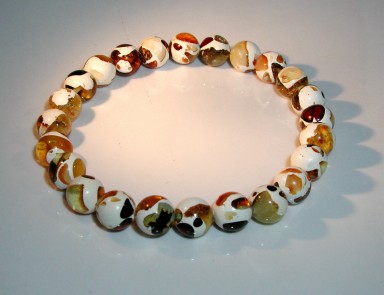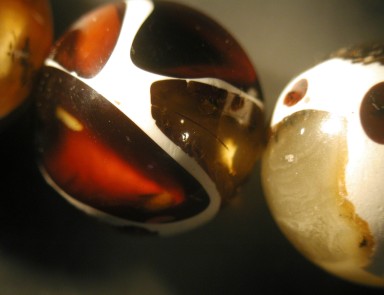Since the middle of the last century an Amber imitation has been on the market, produced by embedding real Amber chips into a transparent polyester resin. This imitation is called "Polybern". The name is derived from the contraction of "poly" from the word "polyester" and "bern" from the German "Bernstein" for Amber. For a long time this composition of fossil and synthetic resin had almost disappeared from the market, but now it is offered again in a slightly modified version. In this current product, transparent brown Amber chips are embedded into nontransparent white synthetic resin.


With a magnifying glass it is possible to spot small round pores in the white plastic material. They develop because of a degasification process while the materia is hardening. When rubbing the Polybern firmly over an unglazed ceramic surface area (or a streak plate as commonly used in mineral examinations) an unpleasant plastic odor develops.
Similar imitations are also available in the combination of brown Common Opal or genuine Fire Opal with white synthetic resin. Again the synthetic resin can be recognized by the degassing pores and its unpleasant odor when rubbing it over a streak plate.
According to the current CIBJO regulations, such composite stones may not be offered as "genuine Amber" or simply "Opal". They must be tagged as Amber- or Opal-Imitations.



